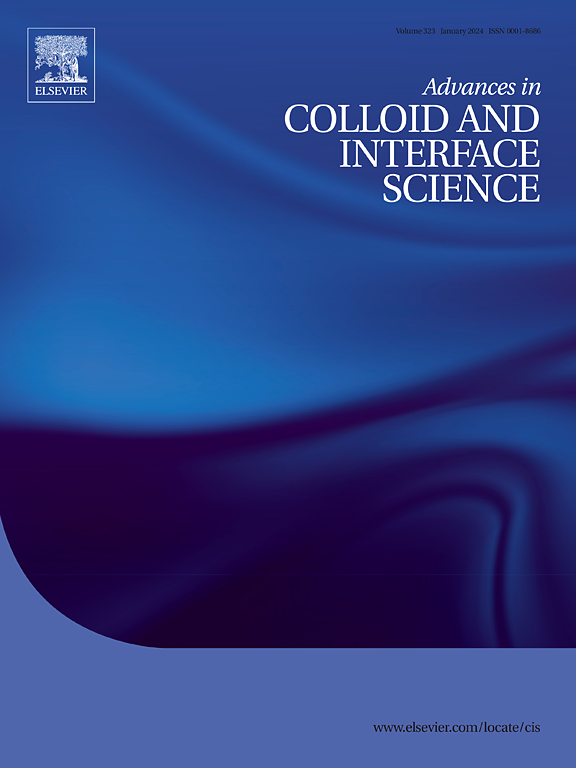二维黑磷表面/界面摩擦研究进展
IF 15.9
1区 化学
Q1 CHEMISTRY, PHYSICAL
引用次数: 0
摘要
2014年,随着黑磷(BP)合成和改性方法的发展,单层或多层BP被剥离成二维(2D)层状材料,在晶体管、电池、光电子、摩擦、润滑等领域具有广阔的应用前景。从这个角度来看,我们强调了BP研究的最新进展,特别是其摩擦学和润滑性能。本文主要介绍了BP在固液润滑领域的研究进展,并从宏观、微观和计算摩擦学角度系统阐述了BP的摩擦性质。在特殊条件下(高负荷、氧化等),BP可以获得长期的超润滑性能,远远超过其他传统的二维润滑材料(Gr、MoS2等)。由于BP润滑油的摩擦界面复杂多样,在宏观和微观超润滑机理方面存在明显的不足和误区。BP的超润滑机理在宏观上大致归因于多因素的耦合或协同作用,微观上是否存在摩擦界面的二次过渡或接触面积差异仍是一个悬而未决的问题。我们认为,这些缺陷和误解更多的是由于缺乏对BP摩擦过程中界面转变行为和机理的研究。从宏观和微观实验两方面分析总结了当前BP摩擦研究中存在的挑战和局限性。最后,我们提出了一种基于计算摩擦学的方法来调和宏观和微观尺度实验之间的差异。本文章由计算机程序翻译,如有差异,请以英文原文为准。

Recent development in surface/interface friction of two-dimensional black phosphorus: A review
In 2014, with the development of synthesis and modification methods of black phosphorus (BP), single or multiple layers of BP were stripped into two-dimensional (2D) layered materials, which had great prospects in transistors, batteries, optoelectronics, friction, and lubrication fields. From this point of view, we highlight recent advances in BP research, particularly its tribology and lubrication properties. This paper introduces mainly the research progress of BP in the solid-liquid lubrication fields, and systematically expounds its friction nature from the perspective of macroscopic, microscopic, and computational tribology. Under special conditions (high load, oxidation, etc.), a long-term superlubricity performance of BP could be obtained, which far exceeded other traditional 2D lubrication materials (Gr, MoS2, etc.). There were obvious deficiencies and misunderstandings about the macroscopic and microscopic superlubricity mechanism of BP lubricant, due to the complex and diversified frictional interfaces. The superlubricity mechanism of BP was roughly attributed to the multi-factor coupling or synergistic action in macroscopic, and it was still an open question whether there was secondary transition or contact area difference of the friction interface in microscopic. We believe that these deficiencies and misunderstandings are more ascribed to the lack of research on the interface transition behavior and mechanism during BP friction. We analyze and summarize the challenges and limitations in understanding BP's superlubricity mechanism based on macroscopic and microscopic experiments in the current BP friction research. Finally, we propose a computational tribology-based approach to reconcile discrepancies between macro- and micro-scale experiments.
求助全文
通过发布文献求助,成功后即可免费获取论文全文。
去求助
来源期刊
CiteScore
28.50
自引率
2.60%
发文量
175
审稿时长
31 days
期刊介绍:
"Advances in Colloid and Interface Science" is an international journal that focuses on experimental and theoretical developments in interfacial and colloidal phenomena. The journal covers a wide range of disciplines including biology, chemistry, physics, and technology.
The journal accepts review articles on any topic within the scope of colloid and interface science. These articles should provide an in-depth analysis of the subject matter, offering a critical review of the current state of the field. The author's informed opinion on the topic should also be included. The manuscript should compare and contrast ideas found in the reviewed literature and address the limitations of these ideas.
Typically, the articles published in this journal are written by recognized experts in the field.

 求助内容:
求助内容: 应助结果提醒方式:
应助结果提醒方式:


